Back in 2020, David Sewell explained the work of DNEG on the Cursed series. He’s back to talk about another series and MPC‘s work.
Oliver Winwood started his career in visual effects in 2004 at Cinesite. He joined the MPC team in 2005. He has worked on a number of projects such as The Jungle Book, Alien: Covenant, The Lion King and The Third Day.
What is your background?
David Sewell (DS) – I graduated with a degree at Ravensbourne Art College in Graphic Design before being taken on as an intern at one of the founding companies of Visual Effects systems – ‘Quantel’. I worked with them developing software with writers, training companies that bought equipment and doing demonstrations at trade shows. As well as giving me a good grounding in the industry it took me around the world!
I worked in Los Angeles as a compositor with my first films being Independence Day, King Pin and The Crow! Returning to the UK I worked at various London facilities continuing in Film working as a Lead, 2d Supervisor then VFX Supervisor. In 2016, as streaming services really started expanding, I moved into Episodic TV as a Supervisor working on some shows from script to screen, sometimes directly for the production companies. In 2020 (at the start of the pandemic!) I moved to MPC.
Oliver Winwood (OW) – I studied Graphic Design at University before deciding I wanted to make the switch to film. That led me to a short course at Escape Studios where I learnt Maya, before getting a job as a 3D Technical Assistant at Cinesite (my role was that of a render wrangler, but I also had to debug lighting scenes). I was at Cinesite for 8 months then moved to MPC where I worked in the Render and Data Wrangling team, during that time I discovered FX, loved what I was seeing, an amazing mix of the technical and artistic, so pursued a career as an FX TD. That was 17 years ago, in which time I worked my way up through FX to FX Supervisor, before becoming CG Supervisor on The Lion King. An opportunity arose at the start of 2020 shortly after I joined Episodic and I found myself working as a VFX Supervisor on The Third Day for Sky/HBO.
How was this new collaboration with the directors and Production VFX Supervisor Julian Parry?
DS – Although we hadn’t worked together before I’d like to think we had a mutual respect, good relationship and similar creative minds as we started on what would be a long journey due to the Pandemic!
What were their expectations and approach about the visual effects?
DS – Put simply they came to us for our creature work. They wanted the detail and level of work achieved on shows like Jungle book and The Lion King to aid their script.
How did you organize the work with your VFX Producer?
DS – MPC’s producer Dave Brown and I started straight away organising the build of the first and main creatures; The Trollocs. For this we worked directly with the creature lab at MPC which crosses Film and Episodic Features. As the work developed and grew, we needed to expand the disciplines of Rigging, Groom, Animation, Lighting, FX, then Matte Painting, Environments. As plates started coming in so did Camera tracking, Roto animation, Roto, Prep and Compositing.
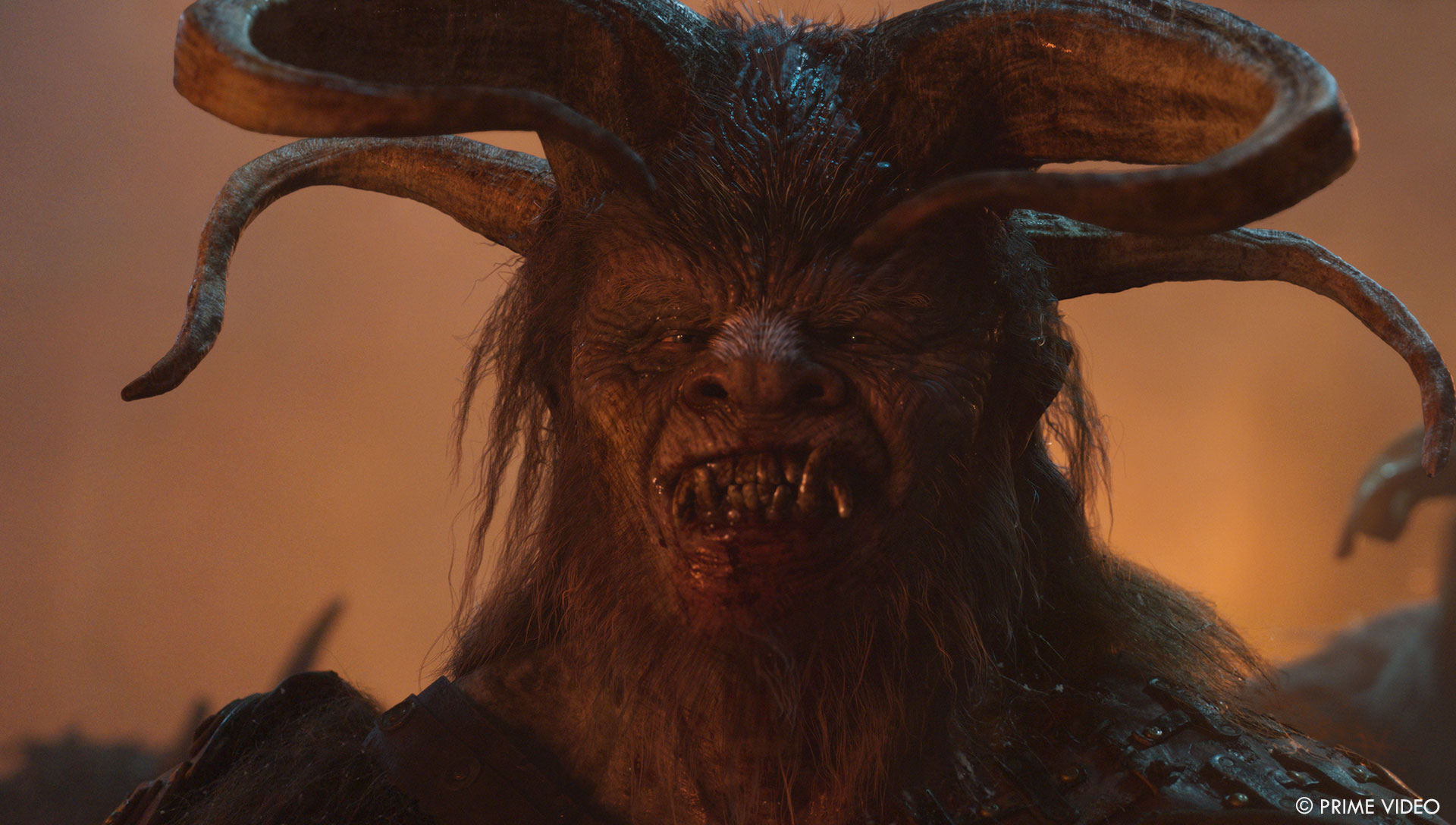
How was split the work between the MPC offices?
OW – The work was split between the London and Bangalore offices. Starting out in Matchmove and Rotoanim in Bangalore the work would move to our Layout team in London. Assets were split between both sites for the characters, while the buildings for the environment were completed by our Bangalore team, before being integrated into the overall environment build by the London team. For animation, lighting and simulation, most of this work was in London with a small team supporting us in Bangalore. Bangalore would also complete the roto and prep work, then for comp the larger team was in Bangalore with a smaller team in London focusing on some of the more bespoke shots.
What are the sequences made by MPC?
DS – Episode 1 – with the Trollocs attacking the villagers at the 2 Rivers. Lots of blood and guts amidst the panic. Then some intense close scenes involving Tam and Rand as the Trolloc ‘Narg’ enters their hut. Egwene defending herself against a Boar Trolloc attack as she is cornered in an alley. As well as Moraines channeling/ weaving effects against the attackers.
Episode 2 – Lead by the Myrddraal or ‘Fade’ -the Trolloc woodland chase scenes and massing on riverbank to cross at the Taran ferry.
Episode 3. – Trolloc cannibalism! As one attacks another that has been wounded. Another scene in a cave when a Trolloc corners Nynaeve forcing her to fight for her life in a pool. A glimpse of the ‘Dark One’
Episode 7. The ‘Way Gate’ exterior environment. Fal Dara and Tarwins Gap environment shots. Decapitation of Palace guardswomen.
Episode 8. The 5000 strong Trolloc Army attacking Tarwins Gap and Aglemars Army. The charge to take Fal Dara lead by the Fades. The 5 women weaving the ‘one power’ – an enormous force conjured from the environment to strike the advancing Trolloc army. The final scene involving a flotilla of CG ships on a CG ocean which then creates an enormous tidal wave.
Can you elaborate about your creatures work?
DS – I’d say this had some of the best creature work I’ve worked with in my career. The level of detail was beyond the resolution it was needed for. We initially built 7 ‘hero’ Trollocs. For those that haven’t seen the show – Trollocs are a biped bovine/ human mix. A bit like a Minotaur but with twisted variations from wolf to boar to hog! We later added to this hall of fame creating a further 7 variations which we could mix and match to create an army of thousands.
We also worked on ‘The Fade’ a character that can control the Trollocs. An insipid, semi translucent, moist skinned creature with no nose or eyes and a mouth full of hundreds of razor-sharp teeth!
And the character called ‘The Dark One’. A man with an aged leathery skin mask with eye and mouth holes full of fire. As well as the usual wolves and seagulls!
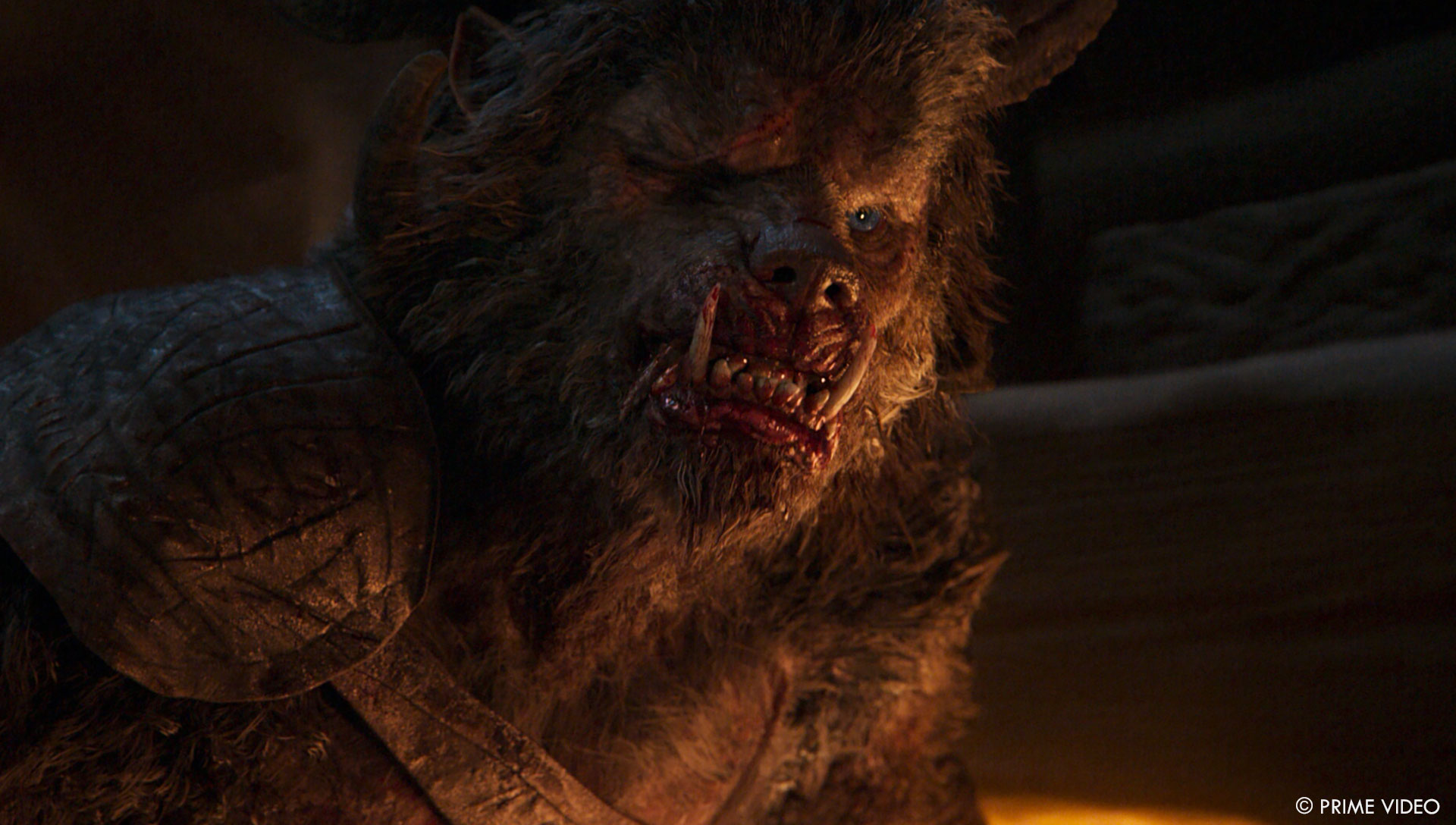
Were you on set?
OW – I spent a week on set in Tenerife. The original shoot plan involved several weeks of shooting out there, however that got cancelled due to covid restrictions. This led them to send me and DOP Jochen Schmoll to meet up with a local crew. Our job was to shoot reference footage in various scouted locations, so that we could then recreate that in CG. We were also tasked with shooting part of the final sequence for episode 8.
Can you tell us more about the creatures rigging and animation?
OW – The rigging followed the high standard that exists in film as we’re building it with our existing proven workflows and tools, so our creatures had the full array of face shapes as well as muscle simulations. For the animation we leveraged mocap as much as we could, holding a couple of internal mocap shoots lead by Animation Supervisor Eduardo Castells. This would create the basis for a lot of shots, with the animation team refining that in shot, as well as creating bespoke animations for shot context.
Did you receive specific indications for the creatures animations?
DS – Yes. Julian Parry was quite detailed in his brief of the way these creatures moved. This helped us a lot in finding the right kind of reference material. We collected numerous natural history refs as well as actual bovine research footage. Technically we had to make sure the fetlock legs moved correctly anatomically. That they balanced believably with their bulky mass across all actions; walking, running/ charging, jumping, falling etc. But then the characteristics were just as important. Mostly attacking in groups like Hyenas but with a ruthless killer instinct. Simple minded like cattle, single purposed like a pack of dogs after a kill, yet with enough intelligence to get their prey like Lions. The models looked so good that it was important to us that they moved 100% believably.
How did you handle their fur and skin?
OW – As mentioned the characters already had muscle dynamics built into the rigs, as well as skin sliding. We would create additional simulations and correctives on top of this when required. While our fur was simulated in Houdini.
Which creature was the most complicated to create and why?
DS – The Trollocs were quite complicated creatures to build. The prosthetic costumes and stilt like ‘risers’ used to simulate the fetlock leg used on set were obviously designed around the human shape. Our CG Trollocs were based on complete natural bovine anatomy and movement. The difficulty came in keeping faith with the great design of the prosthetics whilst also creating an accurate bovine creature. The differences are longer metatarsals, smaller toes/ hooves, shallower eyes and mouth sockets close to the skull, wider opening mouths, thinner fingers, but we think still in keeping with the original designs.
Can you explain in detail about the Myrddraal?
DS – As complicated as the Trollocs were, I think The Myrddraal or ‘The Fade’ also gave us some real challenges in the design. Based on initial prosthetics we had to create a believable translucent subsurface skin material similar to a salamander yet fill the mouth with hundreds of razor-sharp teeth that could retract as it closed like that of a leather back turtle, and with no nose or eyes make it look beautiful yet terrifying! Technically and creatively, this was a challenge.
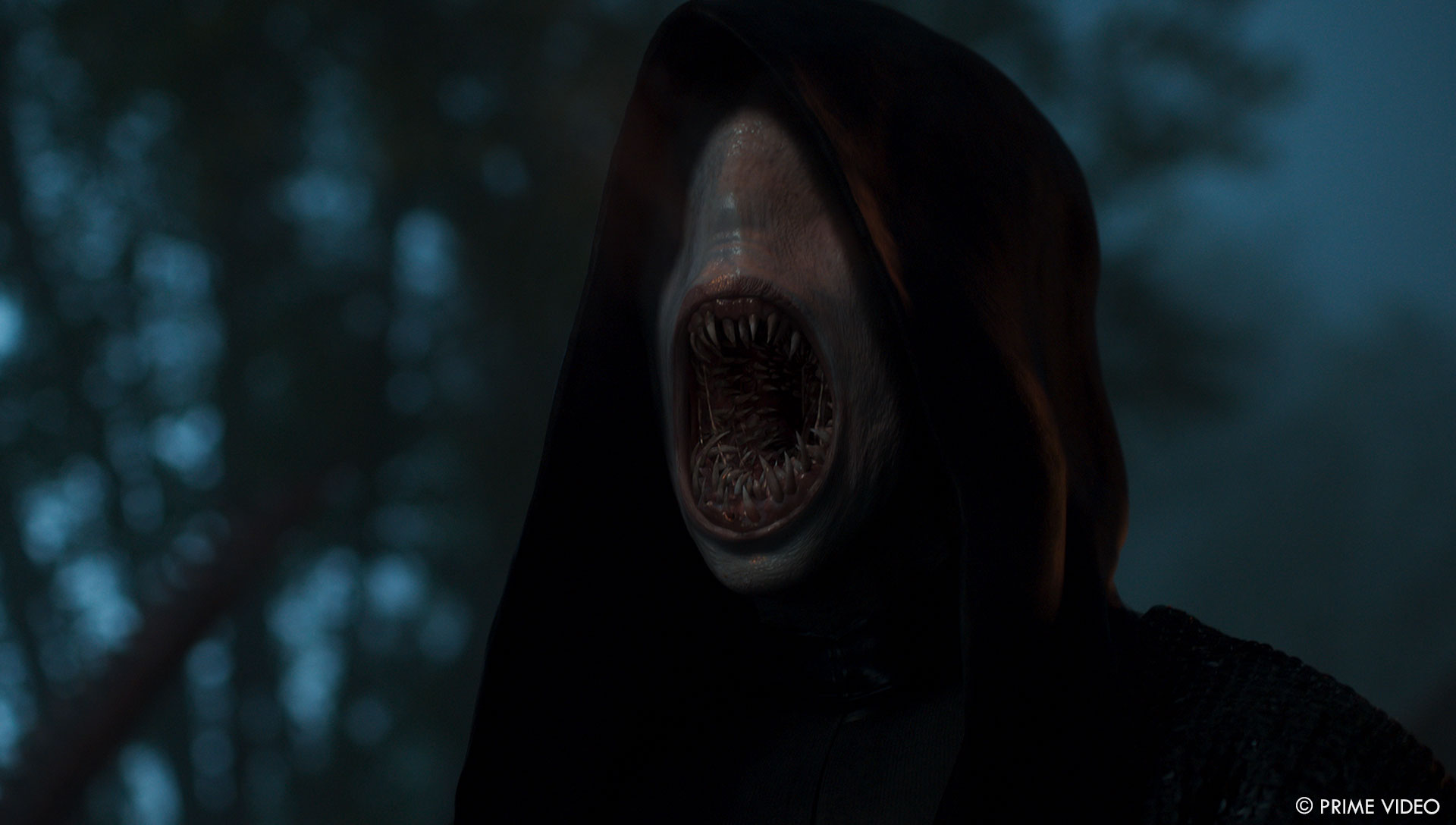
How does the specific skin and mouth affect your work?
DS – In simple terms the wider the mouth opens the more we see inside and the more we need to model. Whether it’s the saliva and blood on the broken teeth of a Trolloc or the way the shark like numerous teeth in The Myddraal just fit in!
Can you elaborate about the shots creation with crowd of creatures?
OW – The crowd was particularly challenging, in part because it was made up of furry creatures, which is already difficult, but they also had to interact and climb on top of each other. This took some iterating, trying to find the correct formations for the Trolloc towers as well as how they would build the towers and interact within them. We had to be smart with our fur as well, so built a setup in Houdini which would wrap the fur whilst also optimising it based on distance to camera making it as render efficient as possible. The crowd simulations were carried out in Houdini using the mocap clips mentioned above, as well as custom clips created by animation with rag doll physics introduced where necessary.
What was the main challenge with the crowd shots?
OW – The biggest challenge with the crowd was creating suitable variation and distancing between the different agents, the fundamental of crowd but even after all this time we would have regular spotting sessions to find ones that looked out of place. Even with a lot of clips it’s easy to start to see repetition in motion when dealing with thousands of agents. We had a large area to fill and had to get the numbers just right for the story, have them climb on top of each other as well as blow them up. Crowd and FX worked closely together to destroy the Trollocs. There would be a first pass rag doll simulation in crowd, which would then drive the FX simulation that would rip them apart.
Can you elaborate about the environment creation?
OW – As mentioned earlier the environment was born out of covid restrictions that were imposed, resulting in the client having to cancel their shoot in Tenerife. With a small local crew and I spending a week out there instead. This led to a pretty huge undertaking for the environment team as instead of having to augment plates, they now had to build an entire CG environment that would be used in over 200 shots, covering an area of just under 100 km². We also made the decision to work outside of our usual pipeline and workflow, adopting a USD workflow in Houdini that VFX Supervisor Julian Bolbach had spearheaded on his show for Apple, Lisey’s Story.
What kind of references and influences did you receive for the environments?
OW – The brief for the environment was to make it look as close to the location in Tenerife as possible. We then modified it from there for story points, such as making the rock formation around the wall so that the Trollocs siege would look more perilous. We had to sell that the wall was the only possible way through and they couldn’t just walk over the mountain.
Did you use procedural tools for their creation?
OW – The final environment was built from a combination of reference material, lidar scans and satellite data. We worked in Houdini with heightfields to block out the environment, before taking sections of it into Z-Brush to refine, then moving back to Houdini to incorporate those sculpts. The environment team heavily utilized USD and Solaris, which was really powerful in allowing us to achieve the look. We were able to stay in Houdini to refine the terrain using the weathering tools, create masks for scatter utilising pipelined assets from our library, as well as creating bespoke assets in Houdini and directly incorporate the lidar scans, a mix that previously would have been a lot harder to achieve. The lookdev was then also completed in Houdini with Prman. From there the environment was broken up into pieces and output at various lods that could be loaded depending on where we were shooting in the environment. A proxy version was also output which layout worked with, this went into our shot package, then lighting swapped the proxy geometry out for the final USD asset in Katana.
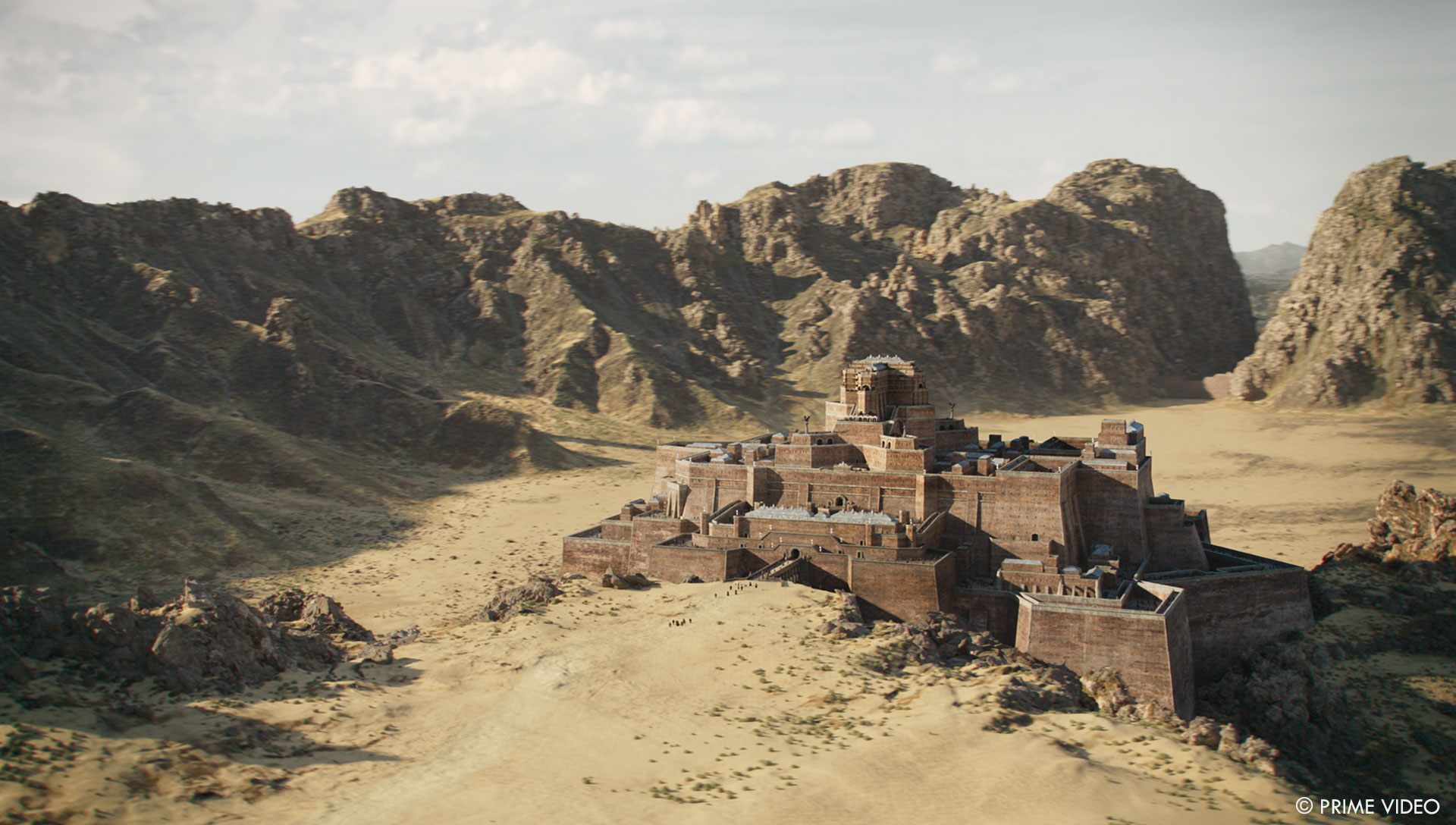
How did you handle the lighting challenge?
OW – We had the usual on set data to recreate the lighting from, but one of the biggest advantages, especially for the earlier sequences, was we were often augmenting practical Trollocs and adding new ones. Where we would usually be inserting a CG creature that nobody has seen into a plate, we had direct reference from the practical Trollocs as to how they would react in various lighting conditions.
Which shot or sequence was the most challenging?
OW – It’s often not the shots you expect. For me when they first come through the Waygate in Episode 7 and head towards Fal Dara (the fortress). This was planned to be built as a DMP using reference footage from Tenerife, in part as the schedule meant we hadn’t built the environment when we started working on these shots. The shots looking back at the Waygate looked great, but the ones looking towards Fal Dara never sat right compositionally. We went through multiple designs trying to find the right angle that told the story, by which point the build of the environment caught up. Due to the way we had built our CG environment, we were able to drop cameras into it and find a new angle that worked better for the shot, render that out and give it back to DMP to create the transition between the plate and the environment.
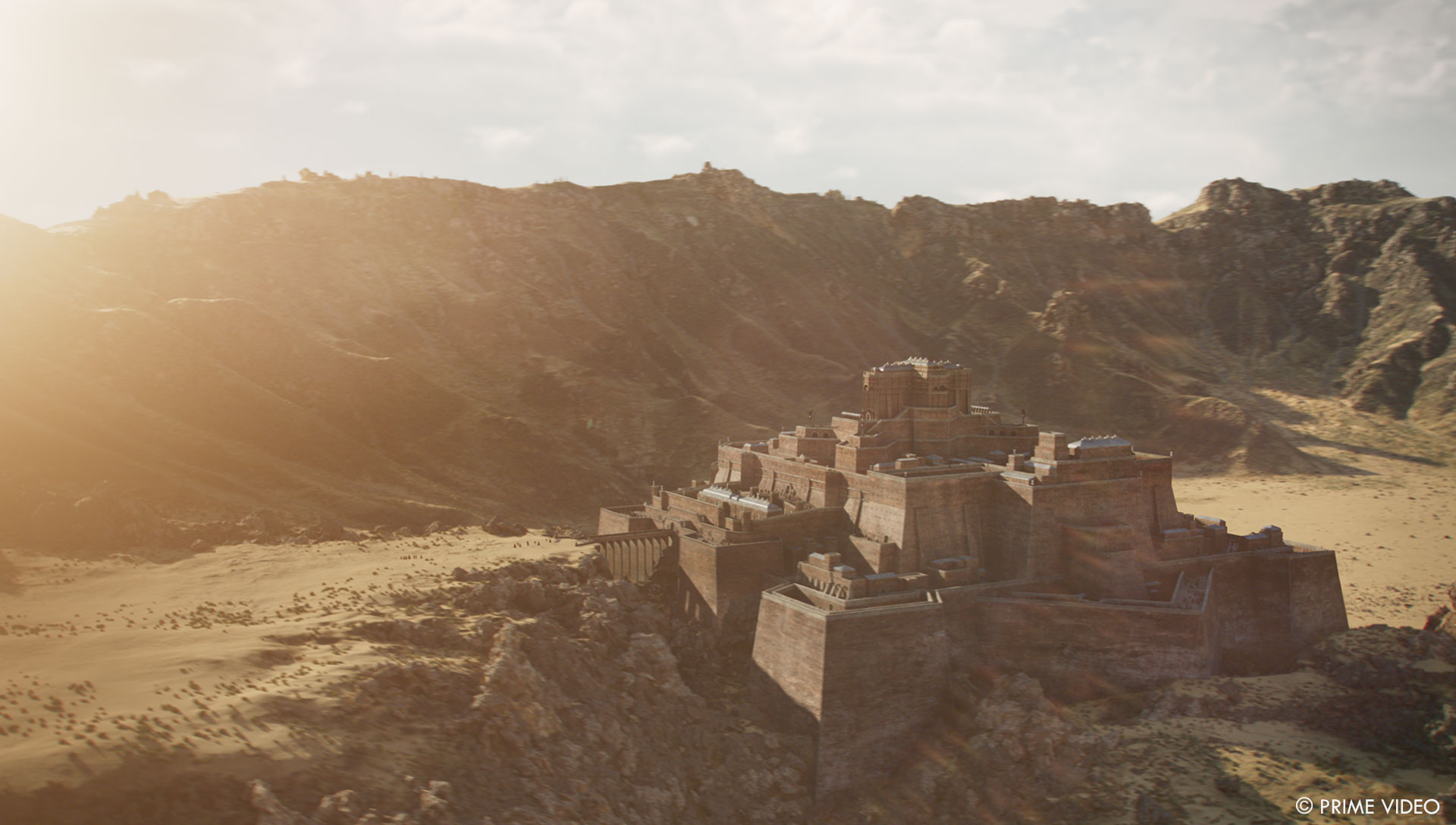
Is there something specific that gives you some really short nights?
OW – For most of the project I slept very well. It always gets difficult the closer you get to delivery, so I definitely had a few short nights towards the end, but there wasn’t anything specific.
DS – I think as a supervisor your job is to look ahead on a show at the bigger shots and make sure they are well prepared for each discipline when it comes to working on them. The difficulty in that is that you can’t always know the problems until you start working on them! So yes, bigger shots like the ‘One Power’ effect on the army of attacking Trollocs was definitely one of those!
What is your favorite shot or sequence?
OW – I have a few favorites, from episode 1 there is a shot where Perrins wife Laila is spitting out blood, she had some blood on her face in the plate, but we had to add blood coming out of the mouth and falling in such a way that it matched a later shot with practical blood. It’s satisfying doing shots that aren’t obviously CG and most of the audience will be none the wiser to that fact. In episode 8 I really liked the last shot of the Baboon Trolloc coming through the window during the siege of Tarwins Gap. It was a Trolloc that didn’t exist on set, and we were asked to work on a design for a new unique Trolloc. I really liked the design and was impressed with how well it held up on full screen.
DS – For me it’s a quite subtle and simple shot. It’s in episode 1 when the Trolloc ‘Narg’ is leaning over Tam about to finish him off after a fight and he lifts and turns his head when he hears Rand calling him. It’s really subtle but the animation captures these Trollocs’ psych as well as showing in close up detail the work that’s gone into them.
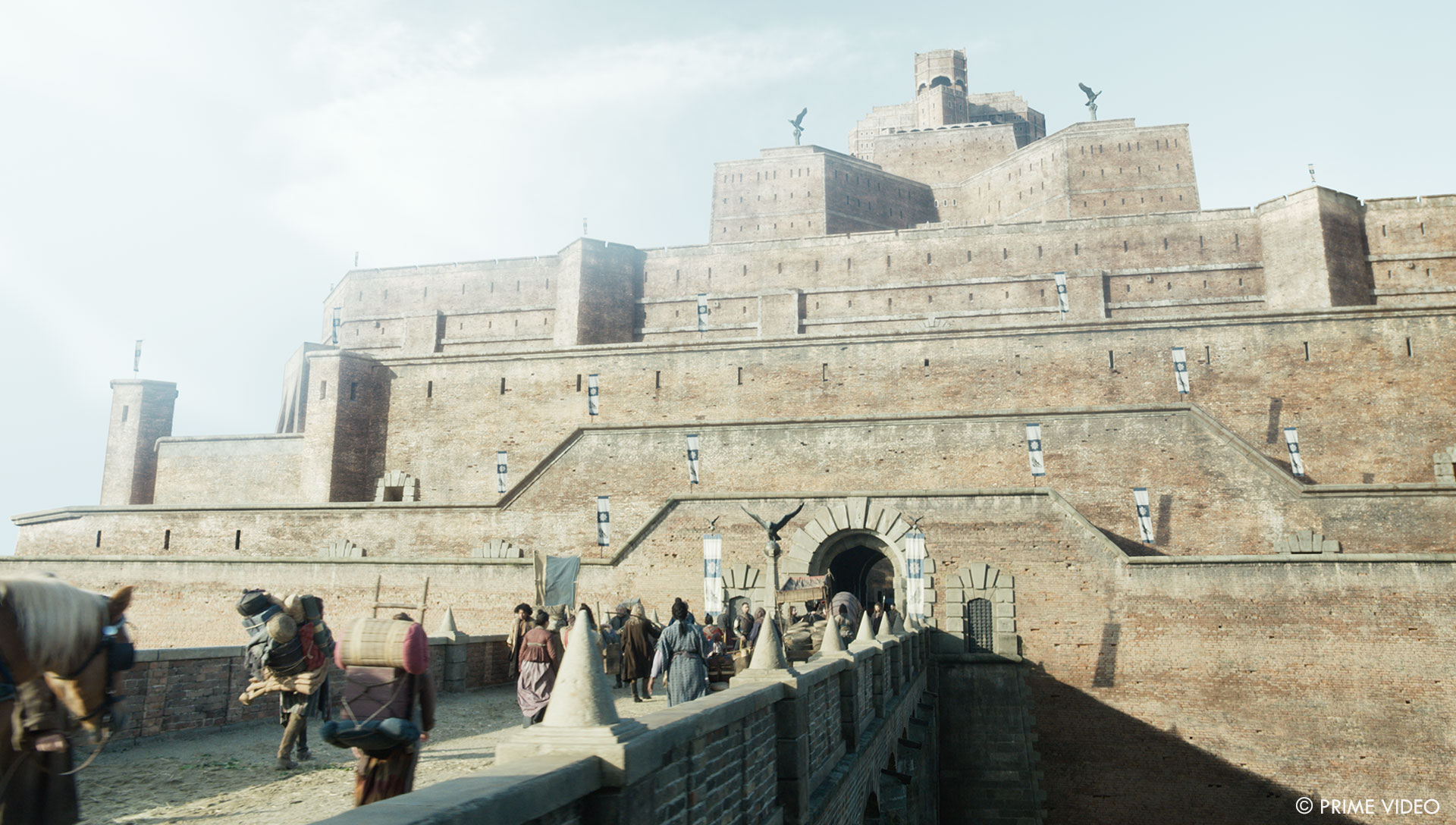
What is your best memory of this show?
OW – It would have to be being in the reviews with the team. We really did have an amazing group of people on the show and we had some fun.
DS – Agree with Oli – great team. When you have a good vibe going amongst the team it’s really special. Just a shame shows are a moment in time.
How long have you worked on this show?
DS – About 20 months!!! I think it’s the longest show for me EVER!!
OW – I joined a little later than Dave, it’s hard to remember exactly when, as I started helping to set up the show while delivering my previous one. In all it was around 15 months.
What’s the VFX shots count?
DS – Shots: 719, Assets: 55
What was the size of your team?
DS – Total crew: 404
What is your next project?
OW – I don’t think I’m allowed to say right now unfortunately
DS – It’s a WW2 project – that’s all I can say!
What are the four movies that gave you the passion for cinema?
OW – I’m going to go straight to the cliché of Star Wars, I watched it a lot growing up and am surrounded by prop replicas in my home office.
DS – Originally it was The Empire Strikes Back and Independence Day but then more recently it’s been Moon and The Big Lebowski (didn’t say it had to be VFX ?)
A big thanks for your time.
WANT TO KNOW MORE?
MPC Episodic: Dedicated page about The Wheel of Time on MPC Episodic website.
Julian Parry: Here is my interview of Overall VFX Supervisor Julian Parry about The Wheel of Time.
Amazon Prime Video: You can watch now The Wheel of Time on Amazon Prime Video.
© Vincent Frei – The Art of VFX – 2022




